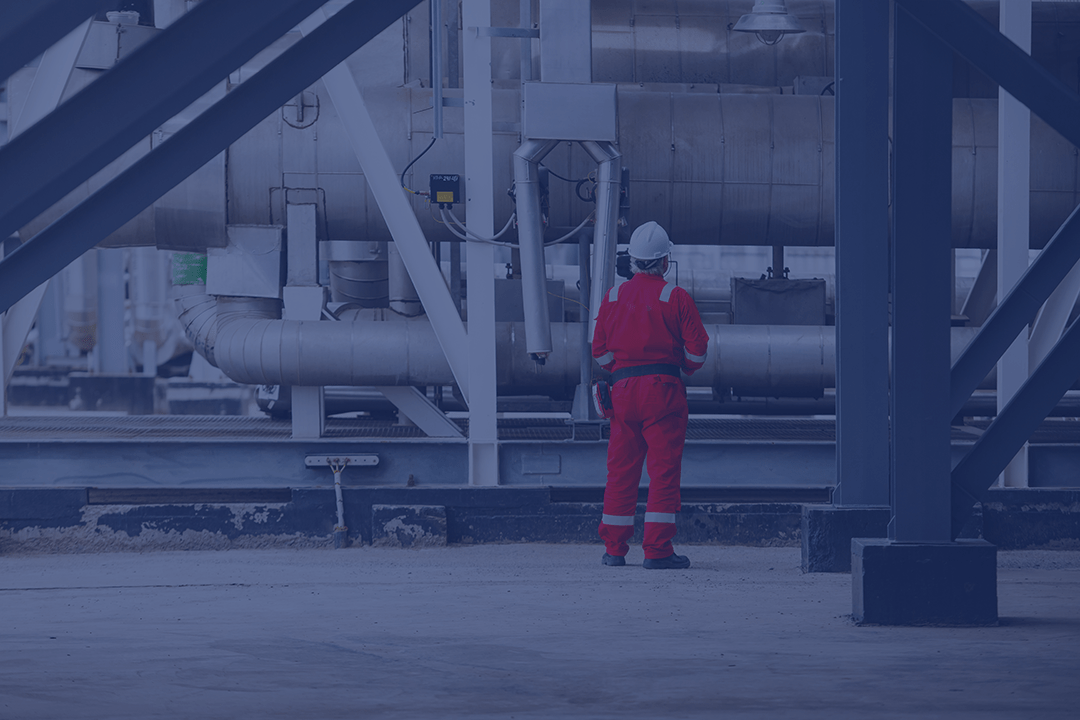Introduction
Definition of Lone Workers
Lone workers are employees who work without close or direct supervision for all or part of their work day. This can include employees who work in remote locations, employees who work outside of regular working hours, and employees who work in hazardous environments.
Overview of Risks Faced by Lone Workers
Lone workers face a range of unique risks and challenges that are not present in a traditional workplace environment. These risks can include physical hazards such as accidents or incidents, as well as mental health hazards such as stress or burnout. It is important for employers to understand the specific risks that their workers face and to take steps to minimize these risks and keep their workers safe.
This article will explore the dangers faced by lone workers and provide practical tips and advice for staying safe when working alone. By understanding these risks and taking appropriate precautions, workers can help to ensure their own safety and minimize the impact of accidents and incidents when working alone.
Hazards in the Workplace
Risks in Industries Such as Oil and Gas, Construction, and Rural Work
Some industries, such as oil and gas, construction, and rural work, are particularly high-risk for lone workers. These industries often involve working in remote locations, exposure to hazardous materials, or working with heavy machinery. It is important for workers in these industries to be aware of the specific risks that they may face and to take appropriate precautions to stay safe.
For example, workers in the oil and gas industry may face risks such as fires, explosions, and toxic chemical exposure. Workers in the construction industry may face hazards such as falls from height, being struck by moving vehicles, or being caught in or between objects. Rural workers may face hazards such as working with heavy machinery, being attacked by animals, or working in isolated locations with limited access to medical care.
Dangers Specific to Individual Workplaces
In addition to the hazards that are common to specific industries, individual workplaces may also have unique dangers. For example, a construction site may have different hazards than a remote oil rig, and it is important for workers to be aware of the specific hazards of their workplace.
Employers are responsible for assessing the risks faced by their workers and taking steps to minimize these risks. This may include providing workers with appropriate personal protective equipment (PPE), training workers in safe work practices, and having effective emergency procedures in place.
Hazards to Mental Health
In addition to physical hazards, lone workers may also face risks to their mental health and wellbeing. These risks can include stress, burnout, and depression. Workers who spend long periods of time working alone in isolated locations may also experience social isolation, which can have a negative impact on their mental health.
Employers should be aware of the potential risks to the mental health of their workers and take steps to minimize these risks. This may include providing workers with access to support and resources, such as an employee assistance program or counseling services.
Hazards from Working Alone
Lone workers may also face hazards from working alone, such as a lack of backup or support in the event of an accident or emergency. For example, a worker who becomes injured or ill while working alone may not be able to call for help or receive prompt medical attention.
To minimize these risks, workers should be trained in basic first aid and emergency procedures, and should have access to a means of communication that allows them to call for help in the event of an emergency. Employers should also consider implementing systems for checking in on workers, such as a buddy system or regular check-in calls, to ensure that workers are safe and accounted for at all times.
Hazards from Working in Remote Locations
Lone workers who work in remote locations may also face specific hazards, such as difficulty accessing medical care in the event of an injury, exposure to harsh weather conditions, or a lack of access to basic necessities such as food and water.
Employers should assess the risks faced by workers in remote locations and take steps to minimize these risks. This may include providing workers with appropriate equipment and supplies, such as warm clothing, food and water, and first aid kits, and ensuring that workers have access to communication devices and medical care in the event of an emergency.
In conclusion
Working alone can pose significant hazards to workers in a variety of industries and workplaces. By understanding the risks and taking appropriate precautions, workers and employers can help to ensure a safe and healthy work environment for all.
Technology Solutions for Lone Worker Safety
Location Systems for Workers
Employers can use location systems to track the whereabouts of their lone workers in real-time. This allows for prompt response in the event of an emergency, and can help to ensure the safety and well-being of workers at all times. These systems can be integrated into mobile phones, or can be used in combination with other devices, such as GPS trackers or lone worker alarm devices.
Emergency Alarms for Workers
Emergency alarms are specifically designed for lone workers and can be used to alert emergency services or designated contacts in the event of an emergency. These alarms can be activated manually by the worker, or automatically in the event of a fall or other emergency.
The Use of Mobile Phones for Worker
Safety Mobile phones are increasingly being used as a tool for improving the safety and well-being of lone workers. For example, many employers now provide their workers with mobile phones equipped with location tracking systems, emergency alarm capabilities, and other safety features. Workers can also use mobile phones to communicate with coworkers and emergency services, making it easier to seek help in the event of an emergency.
Advantages of Lone Worker Alert Bracelets
Lone worker alert bracelets are wearable devices designed to help keep workers safe. These devices can be equipped with a range of safety features, including location tracking, emergency alarms, and two-way communication capabilities. The use of alert bracelets can provide a number of advantages for both workers and employers, including improved response times in emergency situations, and peace of mind for both workers and their loved ones.
In conclusion, there are a number of technological solutions available to help protect lone workers from the hazards they may face on the job. Employers can take advantage of these solutions to help ensure the safety and well-being of their workers, and to help protect against the risks inherent in working alone.
Employer Obligations and Responsibilities
Regulations for the Safety of Lone Workers
Employers have a legal obligation to ensure the safety of their workers, including those who work alone. In many jurisdictions, there are specific regulations in place to help protect lone workers and ensure that employers are meeting their obligations. These regulations may include requirements for risk assessments, the provision of personal protective equipment, and the development of emergency response plans.
Training Programs for Lone Workers
Employers should also provide training to their lone workers to help ensure that they are aware of the hazards they may face and how to stay safe while working alone. This training may include information on how to use the technology solutions available to protect workers, as well as practical tips for staying safe in hazardous environments.
Employer Obligations for the Safety of Lone Workers
In addition to providing training and equipment, employers have an ongoing obligation to monitor the safety of their lone workers. This may include regularly checking in with workers to ensure that they are safe and well, and responding promptly in the event of an emergency. Employers should also have processes in place to quickly respond to incidents involving lone workers, including emergency procedures and designated points of contact for reporting and responding to incidents.
Employer Liability in the Event of an Incident Involving a Lone Worker
In the event of an incident involving a lone worker, employers may be held liable for any harm that results. This is why it is so important for employers to take the necessary steps to ensure the safety of their workers, including providing adequate training and technology solutions. By taking their obligations seriously, employers can help to prevent incidents from occurring and minimize their legal exposure in the event of an incident.
Lone workers face unique and often life-threatening hazards on the job. Employers have a legal and ethical obligation to ensure the safety of these workers, who are often working alone in remote locations or performing tasks that carry a high risk of injury or death. To meet this obligation, employers must take a proactive approach to the safety of lone workers, including:
- Ensuring compliance with regulations for the safety of lone workers. This may include regulations specific to the industry in which the worker is employed, as well as broader safety standards set by governing bodies.
- Providing training programs for lone workers. This training should cover the dangers of the job and how to respond to emergencies, as well as best practices for working alone in a safe manner.
- Maintaining ongoing communication with lone workers, especially in high-risk environments, to ensure that they are safe and accounted for. This may involve the use of technology, such as GPS tracking or emergency alarms, to monitor the safety of lone workers in real-time.
- Assuming liability in the event of an incident involving a lone worker. Employers must be prepared to take responsibility for the safety and well-being of these workers, even if they are working off-site or outside normal working hours.
By taking these steps, employers can help ensure the safety of lone workers and reduce the risk of serious incidents on the job.
In conclusion
Lone workers face unique and potentially hazardous working conditions, making it essential for employers to be aware of the risks and to implement practical measures to ensure their safety. From location systems, emergency alarms and the use of mobile phones to employer obligations and training programs, there are a variety of tools and strategies available to mitigate the risks faced by lone workers. It is important to raise awareness about the dangers these workers face, and to take steps to protect them in the workplace. By working together to prioritize the safety of lone workers, we can create safer and more secure working environments for all.






